- Home
- Dave Pelzer
A Child Called It Page 10
A Child Called It Read online
Page 10
I’m free.
Perspectives on
Child Abuse
Dave Pelzer
Survivor
As a child living in a dark world, I feared for my life and thought I was alone. As an adult I know now that I was not alone. There were thousands of other abused children.
Sources of information vary, but it is estimated that one in five children are physically, emotionally or sexually abused in our country. Unfortunately, there are those among the uninformed public who believe that most abuse is nothing more than parents exerting their “right” to discipline their children and letting it get a little out of hand. These same people may believe that over-discipline is not likely to follow the child into adulthood. They are tragically misinformed.
On any given day, some adult who is the victim of a dark past of child abuse may vent his or her pent-up frustrations on society or on those he or she may love. The public is well informed about the most uncommon cases. Unusual incidents attract the media and boost ratings. We heard about the lawyer father who struck out with his fist and left the child unconscious on the floor before retiring to bed. We heard about the father who dunked the small child in the toilet. Both children died. In a more bizarre case both a mother and a father each killed a child and hid their bodies for a period of four years. There are other high profile stories, like the abused child who grew into the man who went on a killing spree at a McDonald’s, gunning down helpless victims until the police took his life.
More common are the unknowns who disappear, like the homeless boy who sleeps under a freeway bridge and calls a cardboard box his home. Each year thousands of abused girls run away from home and sell their bodies in order to survive. Others strike out by joining gangs who are totally committed to violence and destruction.
Many child abuse victims hide their past deep inside, so deep that the possibility of becoming an abuser themselves is unthinkable. They live normal lives, becoming husbands and wives, raising families and building careers. But the ordinary problems of everyday life often force the former abuse victim to behave as they were taught as children. Spouses and children then become the object of their frustration, and they unknowingly come the full circle, completing the never-ending cycle of rage.
Some child abuse victims stay quietly locked in their shells. They look the other way, believing that by not acknowledging their past it will go away. They seem to believe that above all Pandora’s Box must stay closed.
Each year, millions of dollars are poured into child protection agencies in our country. These dollars go to local facilities like foster homes and juvenile halls. There are dollar grants to thousands of private organizations whose mission includes basic child abuse prevention, the counseling of abusive parents and the victims. Every year the number grows larger. In 1990 over 2.5 million child abuse cases were reported in the United States. In 1991 the number increased to more than 2.7 million. As of this writing, the estimate is over 3 million.
Why? What causes the tragedy of child abuse? Is it really as bad as they say? Can it be stopped? And perhaps the most important of all questions, what is abuse like through the eyes of the child?
What you have just read is a story of an ordinary family that was devastated by their hidden secret. The story has two objectives: the first is to inform the reader how a loving, caring parent can change to a cold, abusive monster venting frustrations on a helpless child; the second is the eventual survival and triumph of the human spirit over seemingly insurmountable odds.
Some readers will find the story unreal and disturbing, but child abuse is a disturbing phenomenon that is a reality in our society. Child abuse has a domino effect that spreads to all who touch the family. It takes its greatest toll on the child and spreads into the immediate family to the spouse, who is often torn between the child and their mate. From there it goes to other children in the family who do not understand and also feel threatened. Also involved are neighbors who hear the screams but do not react, teachers who see the bruises and must deal with a child too distracted to learn, and relatives who want to intervene but do not want to risk relationships.
This is more than a story of survival. It is a story of victory and celebration. Even in its darkest passages, the heart is unconquerable. It is important that the body survives, but it is more meaningful that the human spirit prevails.
This is my story and mine alone. For years I was confined to the darkness of my own mind and heart, being alone and a pitiful “loser.” At first I wanted nothing more than to be like others, but that motivation grew. I wanted to become a “winner.” For over 13 years I served my country in the military. I now serve my country giving seminars and workshops to others in need, helping them to break their chains. From one who has been there, I bring a message to abused children and those who work with them. I bring a perspective born in the brutal reality of child abuse and nurtured in hope for a better tomorrow. Most importantly, I broke the cycle and became a father whose only guilt is that of spoiling his son with love and encouragement.
Today there are millions in our country in desperate need of help. It is my mission to assist those in need of a helping hand. I believe it is important for people to know that no matter what lies in their past, they can overcome the dark side and press on to a brighter world. It is perhaps a paradox that without the abuse of my past, I might not be what I am today. Because of the darkness in my childhood, I have a deep appreciation for life. I was fortunate enough to turn tragedy into triumph. This is my story.
Perhaps at no time in the history of our country has the family been under more stress. Economic and social changes have pushed the family to its limit and made child abuse more likely. If society is to come to grips with the problem, it must be exposed. Once exposed, the causes of child abuse can be understood and support can truly begin. Childhood should be carefree, playing in the sun; not living a nightmare in the darkness of the soul.
Steven E. Ziegler
Teacher
September, 1992, began as a typical back-to-school month for me. In my 22nd year of teaching, I found the usual hectic, non-stop confusion. There were close to 200 new students who had names for me to learn and several new faculty members to welcome aboard. It was goodbye to summer vacation and hello to additional responsibilities, and the annual doom and gloom from Sacramento regarding money for schools. Nothing had seemingly changed about the beginning of school, until a telephone message arrived on the 21st that rather painfully jolted me back 20 years: “A David Pelzer would like you to contact his agent, regarding some child abuse reports you were associated with 20 years ago.” The past came back all too quickly.
Oh, yes, how well I remember David Pelzer. I was a recent college graduate, a new teacher; and as I look back, I knew little about the real world of my chosen career. And the thing I knew least about was child abuse. In the early 1970s I didn’t know if child abuse actually existed. If it did, it remained very much in the “closet” as did so many unmentionable lifestyles and behaviors back then. We have learned so much; yet we have so far to go.
My mind returned to the Thomas Edison School in Daly City, California, September, 1972. Enter little David Pelzer as one of my fifth-grade students. I was naive back then, but I was blessed with a sensitivity that told me there was something terribly wrong in David’s life. Food missing from other students’ lunches was traced to this thin, sad boy. Questionable bruises appeared on exposed parts of his body. Everything began to point to one thing: this kid was being beaten and punished in ways far beyond normal parental practice. It was several years later when I learned that what I was witnessing in my classroom was the third-worst case of child abuse on record in the entire state of California.
It is not for me to tell again all the graphic details my colleagues and I witnessed and reported to the authorities so many years ago. That account remains David’s privilege and opportunity in this book. But what a wonderful opportunity it is for this young man to come forward and tell
his story so that other children may not suffer. I deeply admire his courage in doing so.
My very best to you, David. There is absolutely no doubt in my mind how far you have truly come.
Valerie Bivens
Social Worker
As a Social Worker for Child Protective Services in California, I am all too aware of the frequency and severity of crimes against children. This book is the account of one child’s unthinkable abuse. We see the child’s perception as he moves through a horrifying continuum, from an idealistic family life to becoming a “prisoner of war” in his own home. This story is shared with the reader by a survivor, a man of extreme courage and fortitude.
Unfortunately, the general public is unaware of the extent of child abuse. These children, victims of outrageous crimes, too often are unable to speak about or against their abusers. Their rage and pain is then turned on themselves or others close to them, and the cycle continues.
We are beginning to hear more about child abuse. Movies and magazine articles on the subject are becoming more frequent, but cases are often sensationalized, and we are too far removed to understand the virtual reality and pain of the victim child. This book enlightens and educates. As we move with David through fear, loss, isolation, pain and rage to eventual hope, the dark world of the abused child becomes painfully clear. We become aware of the child’s cry through David Pelzer’s eyes, ears and body. We also feel the victim’s heart as it moves from unbearable aching to eventual triumph.
Glenn A. Goldberg
Former Executive Director of the
California Consortium for the
Prevention of Child Abuse
David Pelzer’s story must be told so that we can mobilize Americans to create a country where it won’t hurt to be a child. Millions of our children, our most precious natural resource, are being victimized by a tragic and unconscionable epidemic of child abuse and neglect. Both the level and intensity of child maltreatment have increased dramatically in the last decade. David’s story will help people understand that our child abuse crisis goes far beyond excessive spanking. Each year hundreds of thousands of helpless children are being brutalized and tortured physically, emotionally and sexually.
Each act of child abuse reverberates into the future; when a child gets hurt, we may all suffer the consequences. David Pelzer is a triumphant survivor of his childhood abuse, and his story is an inspiration to all of us. We must never forget, however, the tens of thousands of other children who didn’t survive their ordeals, and the millions who are still suffering. The only cure for child abuse is its prevention; and it is my fervent hope that this book will help build our growing movement of people working to prevent child abuse in all its forms.
I Never Knew
I never knew how bad it was;
I heard it did exist.
I was appalled at this crime
That robbed youth
Of their “special” time.
I never knew how bad it hurt;
The bruises and scars aren’t seen.
And why somewhere along life’s way,
The brutality of abuse
Has made you pay.
I never knew how you felt;
Your self-esteem so low.
I only knew you crept away,
And never let your feelings show.
I never knew what I could do;
That I could help somehow.
That all you needed was a friend;
Just someone to be your pal.
But now I know that I can help;
I can make a difference, too.
I’ll stand with you;
I’ll shout with you,
And the rest can’t say, “I never knew.”
Cindy M. Adams
Resources for Help
Child Help USA offers a 24-hour crisis hot line, national information and referral network for support groups and therapists, and for reporting suspected abuse.
6463 Independence Avenue
Woodland Hills, CA 91367
(800) 422-4453
Child Welfare League of America headquartered in Washington, DC, the Child Welfare League of America is a 75-year-old association of nearly 800 public and private, non-profit agencies that serve abused, neglected and abandoned children, youth and their families. CWLA plays a major advocacy role on Capitol Hill, develops model guidelines for the provision of child welfare services, conducts research and training, and is the world’s largest publisher of child welfare materials.
440 First Street, NW, Suite 310
Washington, DC 20001-2085
(202) 638-2952
The National Committee to Prevent Child Abuse (NCPCA), headquartered in Chicago, is a not-for-profit organization with the goal of preventing child abuse in all its forms. NCPCA promotes public education through its national media campaign, a catalog of publications, and training and technical assistance. Chapters of the national organization are located throughout the United States.
P.O. Box 2866, Chicago, IL 60690
(800) 556-2722
About the Author
A retired air crew member of the United States Air Force, Dave played a major role in operations Just Cause, Desert Shield and Desert Storm. While serving in the Air Force, Dave worked in Juvenile Hall and other programs involving “Youth at Risk” throughout the state of California.
Dave’s unique accomplishments have been recognized through a number of awards, as well as personal commendations by former Presidents Ronald Reagan and George Bush. In 1990, he was the recipient of the J.C. Penney Golden Rule Award. In January of 1993, Dave was honored as one of the Ten Outstanding Young Americans. Dave joins a distinguished group of alumni which includes John F. Kennedy, Richard Nixon, Anne Bancroft, Orson Welles, Elvis Presley, Walt Disney and Nelson Rockefeller. In November of 1994, Dave was the only United States citizen to be awarded as one of the Outstanding Young Persons of the World, in Kobe Japan, for his efforts involving child abuse awareness and prevention, as well as instilling resilience in others. Dave also had the honor of carrying the Olympic flame, which represents the indomitable human spirit, for the 1996 Olympic Torch Relay.
Dave is the author of The Lost Boy, the second part of his trilogy series, and the final installment, A Man Named Dave.
When not on the road or with his son Stephen, Dave lives a quiet life in Rancho Mirage, California, with his wife and box turtle named Chuck.
Questions
For many, reading A Child Called “It” can be an extremely emotional, thought-provoking experience. Please understand that many of your questions will be answered in the next two books in the trilogy series, The Lost Boy and A Man Named Dave.
If you still have questions or comments, please write to the following address, and include a self-addressed, stamped envelope. Letters without SASEs will not be answered due to the overwhelming volume of mail we receive.
D-ESPRIT
P.O. Box 1846
Rancho Mirage, CA 92270
Thank You.
Keynotes, Seminars,
Workshops and
School Assemblies
Dave is recognized as one of the nation’s most effective and respected communicators, addressing corporate groups, conventions and human service professionals. Dave’s unique presentations target internal motivation, overcoming obstacles, positive self-esteem and goal achievement. Additionally, Dave provides workshops for those in the human services, educational and law enforcement fields. Dave also spends a majority of his time working with “Youth at Risk,” junior high and high school assemblies presenting specific programs on child abuse prevention, drug and alcohol awareness, and personal responsibility.
Dave’s motto remains: “Helping others . . . to help themselves.”
For additional specific information on Dave’s programs, write or call:
D-ESPRIT
P.O. Box 1846
Rancho Mirage, CA 92270
Phone: 760-321-4452
Fax: 760-321-68
42
Web site: www.davepelzer.com
To all of you making a difference in your life and the lives of others, my very best.
Dave Pelzer

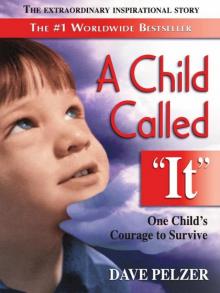 A Child Called It: One Child's Courage to Survive
A Child Called It: One Child's Courage to Survive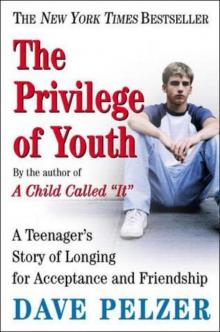 The Privilege of Youth: A Teenager's Story
The Privilege of Youth: A Teenager's Story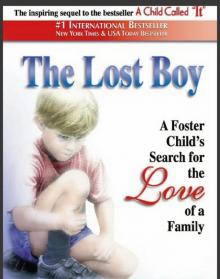 The Lost Boy: A Foster Child's Search for the Love of a Family
The Lost Boy: A Foster Child's Search for the Love of a Family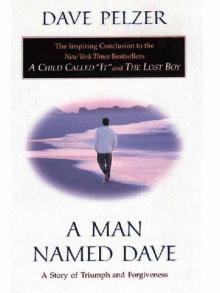 A Man Named Dave
A Man Named Dave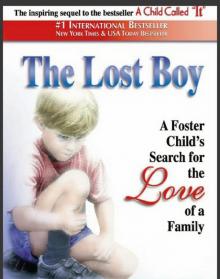 The Lost Boy
The Lost Boy A Child Called It
A Child Called It